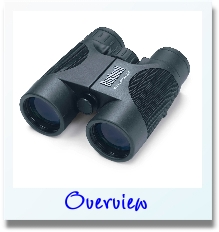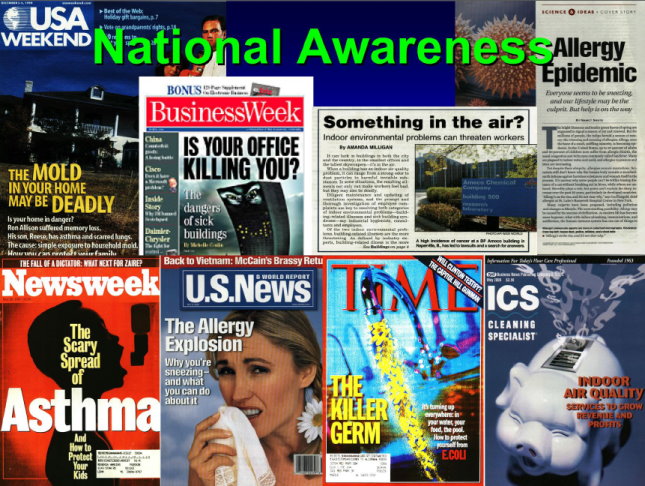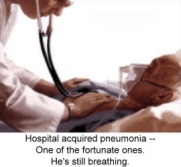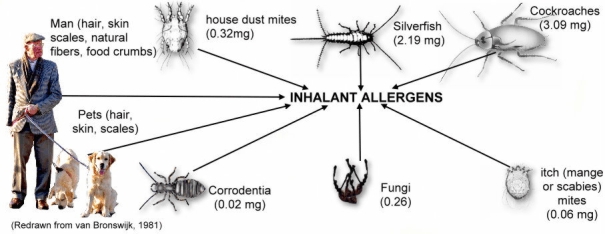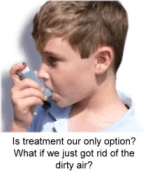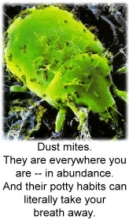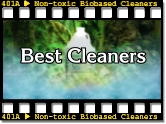
|
|
OVERVIEW
OF INDOOR AIR QUALITY ISSUES
–
What We Don’t Know but Should Know
about the Air We Breathe
–
Part
2 - What Don't We Know?
|
|
1. |
In
1930, 80% of Americans lived on farms and spent the majority of their
time outdoors. Asthma, and a host of other respiratory ailments, were
relatively uncommon. |
|
|
2. |
50
years ago, the primary cause for health issues from air pollution was
polluted OUTDOOR air.
|
|
3. |
|
|
|
4.
5. |
Our
current problem began with the oil embargo of the 1970's.
The
response of the market place --
- Reduced
maximum speed limits to 55 mph;
Adjusted thermostats to 65o F in the winter and
78o F in the summer;
- Passed
stringent building codes demanding more energy efficient homes; and
- Substantially
increased the number and types of synthetic building materials which
both raised the level of VOC's
and lowered the amount of air infiltration.
|
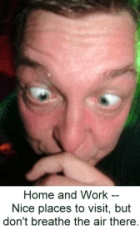 |
6. |
The
result in the market place --
- Sick
Building Syndrome emerged in the 1980's. It is estimated that at least ONE
in THREE buildings is now SICK.
- Additionally,
ONE in TWO homes is thought to have a
MOLD PROBLEM, but the occupants may not be aware of it. Which
one do you work/live in?
- 15
million+ Americans now have asthma, (up
80%) and the number is climbing.
- 28
million+ Americans suffer from hay fever and allergies,
and THAT number is climbing.
- Air
pollution contributes to lung disease,
including respiratory tract infections, asthma,
and lung cancer.
|
|
7. |
By
1980, at least 80% of Americans have been living in urban environments.
Since 1980, incidence of ASTHMA is UP 80%. Coincidence?
|
|
8. |
We
Americans spend 90% - 95% of our time INDOORS. Over the
average lifetime, that is 65 YEARS of breathing INDOOR air.
|

|
|
9. |
U.S.
EPA studies have shown that the levels of many airborne
pollutants may be 25 to 100 times higher indoors than outdoors.
Is there a cause/effect thing here?
|
|
10. |
80%-90%
of most people’s exposure to pesticides occurs indoors. |
 |
11. |
Sadly, we have come to expect industrial and mining
workers to get sick because of the nature of their work exposure, yet 35
- 60 million of America’s NON-INDUSTRIAL workers are ILL per
WEEK.
Do
we all eat at the same restaurant?
Or do we all breathe the same kind of air?
|
|
12. |
50%
of ALL ILLNESSES are either caused or exacerbated by poor IAQ.
Take
a breath and wonder why medical insurance is so high.
|
|
13. |
The
EPA, the United States House of Representatives, and the World Health
Organization rank INDOOR
air pollution as THE Number One environmental
health problem. |
|
|
14. |
The
AIA (American Institute of Architects) rates Indoor Air
Quality issues as the number one issue to be addressed
by architects, engineers, and contractors at least until the year 2010. |
|
|
|
|
|
15. |
Productivity
losses from Sick Building Syndrome
symptoms are estimated to be around 2 percent among
office workers, costing an estimated $50 billion annually. |
|
|
|
|
|
16. |
U.S.
Department of Energy studies suggest that improving
buildings and indoor environments could reduce
health-care costs and sick leave and increase worker performance, resulting
in an estimated productivity gain of $30 to $150 billion annually. |
|
|
|
|
|
17. |
The
DOE further estimated that the potential decreases in adverse health
effects from improvements in indoor environments to be 10 to 30 percent
for infectious respiratory disease and allergy and asthma symptoms and
20 to 50 percent for Sick Building Syndrome symptoms.
|
|
|
|
|
|
18. |
In
addition, the potential direct increase in office workers' performance
was estimated to range between 0.5 and 5 percent. For the U.S., the
corresponding annual health-care savings plus productivity gains are --
- $6
to $19 billion from reduced respiratory disease;
- $1
to $4 billion from reduced allergies and asthma;
- $10
to $20 billion from reduced Sick Building Syndrome symptoms, and
- $12
to $125 billion from direct improvements in worker performance that are
unrelated to health.
Ever wonder what happened
to that Christmas bonus you were wishing for?
|
|
19. |
90,000 to 100,000 American patients DIE each year from nosocomial
infections they acquire in HOSPITALS and HEALTH CARE FACILITIES while
under medical care. Millions more just get sick. Some
face a lifetime of chronic problems and follow up care. It’s
a national disgrace. Where should they go for treatment? And who should
pay for it? |
|
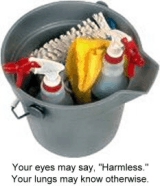 |
20. |
Numerous studies conducted by the EPA over the last
25 years have shown measurable levels of over 107 known
carcinogens in modern offices and homes. |
| 21. |
Each
year, over 1000 NEW CHEMICALS are approved to be used and released into
our air. How long term have been the safety studies? How
do they interact with what is already or soon to be out there? How many
are our bodies supposed to be able to handle? |
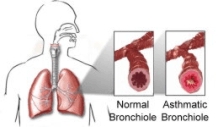 |
22. |
The shoes you wear outside and with which you walk
inside carry, among other things, FECAL MATTER,
BACTERIA, and MOLD which are deposited on the flooring, carpeting,
furniture, and bedding. Hey! Let’s all get
down on the floor and play with the kids! |
|
23. |
Portions of that same FECAL MATTER, BACTERIA, and MOLD
are sucked up into the average vacuum cleaner where they incubate and
reproduce. Any idea what happens the next time the
vacuum is used? |
|
|
24. |
1 ounce of household dust contains about 43,000 dust mites and their
FECES. After six months, it is estimated that 60% of your
pillow’s weight is dust mites and their FECES. Dare you guess
how many millions are in your mattress? |
|
|
25. |
Exposure to dust mites, cat saliva, animal dander, and mold, is
estimated to cause at least 200,000 emergency room visits by asthma
patients each year. Care to join them? |
|
26. |
And, as if these concerns were not enough, we now face the real threat
of airborne biological weapons. Are we absolutely sure that "the
government" is going to be able to protect us? Is there something we
can and should be doing for ourselves? Does the name "Katrina" bring to
mind any lessons we should have learned about taking personal
responsibility?
|
|
It seems pretty ironic.
As necessary as breathing is,
it is almost an endangerment to one's health to do so.
Is anyone paying attention?
Are there any real answers
to these out of control problems?
|


All
materials not supplied by manufacturers or others are
Copyright
2005 - 2014 -- breathe-easier.com -- All Rights Reserved
|
 |
NEW!

Check
out the videos
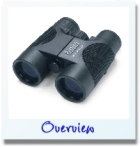


An introduction to indoor air
quality issues.


B.
What Don't We Know?
--
KWIK FACTS.
The problem is worse than we realize.


C.
What Do We Need to Know?
Sorting out the info and charting
a course to follow.

D.
What are We Breathing?
Unwelcome
guests we receive every time we breathe.
2. Allergens.
The
body’s “hit list” of alien invaders.

3. Pathogens.
The
bacteria, viruses, and germs which reproduce in the human body
and
try to
stage
a
takeover.

4. Odors.
Things
have odors for a reason, but why?
Can the problem be corrected rather than merely masked or covered up?


5. Chemicals/Smoke/VOC's.
Are we
possibly drowning in a toxic soup?


6. Mold.
Is what we see dangerous?
And is what we don't see
perhaps more dangerous than what we do see?


E.
Which Technology Works the Best?
Are the technologies pretty
much equal, or is their a large disparity among them?


1. Passive Technology.
The pollution finds the solution.
(Or so we hope!)


2.
Active Technology.
The solution finds the pollution -
even where it is hiding!


a. Stage One -- Dual
Ionization (Particulate Removal)


b.
Stage Two -- Quad
Oxidizing Plasmas


c.
Stage Three -- Advanced
Oxidation


d.
Combo Effect -- The
Whole is Greater Than the Sum of its Parts.


3. Major Differences.
Things that are not the same
are not equal.


a. Literally out of this
world.
The technology which produces
"the purest air on the planet"
actually comes from
out of this world.


b. Overall Air Purity.
By what standard do
you certify the actual purity of air?

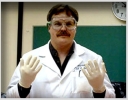
c. Too Clean to Test for Purity?
"Without dirt in the air,
we cannot tell you
how pure the air is."
Does that strike anybody as odd?


d.
Where's the Dirt?
(Where is Clara Peller
when you need her?)


e. What to do?
Anybody
can see that it’s clean except the career bureaucrats.


f. Where are the Germs?
Hint: One place they are not
is
"Blowin' in the Wind".


g. Filtration rates vs. Kill
rates.
In the war against pathogens,
would you like your germs
captured and contained
or killed "graveyard dead"?

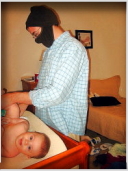
h.
Odor Abatement/Removal.
The
same thing that RCITM
does to
particulates and germs it does also to smoke, dust, and sources of
odors.


F. What IAQ
issues must be considered and addressed?
Head to head comparison of the technologies - very revealing.


G.
Are there medical considerations?
Obligatory disclaimers and the practical realities of what happens when
a sick body can actually catch its breath.


H.
Are there legal and other considerations?
What happens if we just
ignore the problem or fail to investigate it fully?


I.
When is Timing an Issue?
If
the mold or other air quality problem doesn't seem to be spreading or
getting any worse, so we really have to pay it any attention?
 |






































































